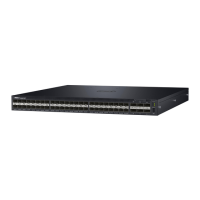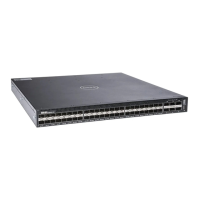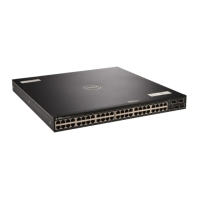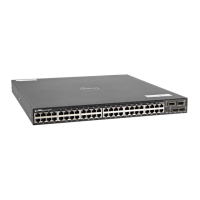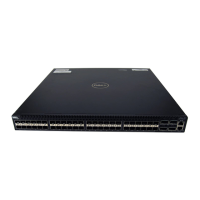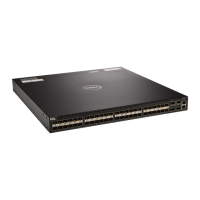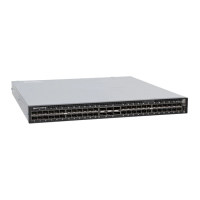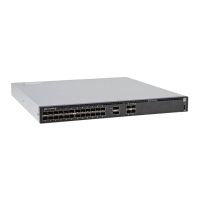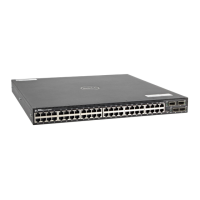Managing the File System
The Dell Networking system can use the internal Flash, external Flash, or remote devices to store files.
The system stores files on the internal Flash by default but can be configured to store files elsewhere.
To view file system information, use the following command.
• View information about each file system.
EXEC Privilege mode
show file-systems
The output of the show file-systems command in the following example shows the total capacity,
amount of free memory, file structure, media type, read/write privileges for each storage device in use.
Dell#show file-systems
Size(b) Free(b) Feature Type Flags Prefixes
520962048 213778432 dosFs2.0 USERFLASH rw flash:
127772672 21936128 dosFs2.0 USERFLASH rw slot0:
- - - network rw ftp:
- - - network rw tftp:
- - - network rw scp:
You can change the default file system so that file management commands apply to a particular device or
memory.
To change the default directory, use the following command.
• Change the default directory.
EXEC Privilege mode
cd directory
Enabling Software Features on Devices
Using a Command Option
The capability to activate software applications or components on a device using a command is supported on
this platform.
Starting with Release 9.4(0.0), you can enable or disable specific software features or applications that need
to run on a device by using a command attribute in the CLI interface. This enables effective, streamlined
management and administration of applications and utilities that run on a device. You can employ this
capability to perform an on-demand activation, or turn-off a software component or protocol. A feature
configuration file generated for each image contains feature names, and denotes if this enabling or disabling
method is available. You can enable or disable the VRF application globally across the system by using this
capability.
Activate the VRF application on a device by using the feature vrf command in CONFIGURATION mode.
Getting Started 64
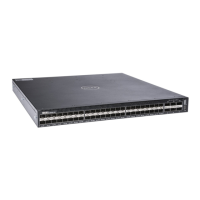
